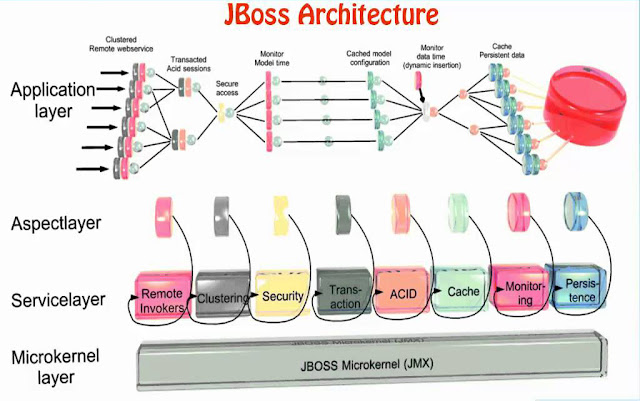Jboss middleware administrator online training

JBoss Middleware Enterprise Application builds on the reasons why thousands of customers have already made it their choice. Time to productivity is critical shorter the better. With SVR technologies, installations can be as simple as unzipping a file, configuring your environment, and starting a script. With IBM WebSphere, the documentation makes it clear that installation requires more than just three steps. Review the SVR technologies and IBM installation documentation for you to see which appears to be easier. JBoss Middleware solutions provide a balanced collection of targeted functionality for enterprise solutions. For example, an enterprise needs BPM, business rules, and the ability to analyze business events. With JBoss Middleware, you get all those capabilities in one packaged platform. With IBM WebSphere, you select from one of three BPM offerings for business process capabilities and then supplement that with IBM WebSphere Operational Decision Management to get the business rules management capabilities in JBoss Enterprise. The IBM WebSphere product portfolio also has different products with overlapping feature sets.
In addition to the three different IBM versions previously mentioned, there are three different ESB options, three major application server choices, and two data caching options. Source code for JBoss Middleware is completely open to inspection as you see fit. Should you need to see how a particular piece of functionality is implemented, you can do so. With IBM WebSphere, you are working with closed proprietary software. Want to know more about developing areas in middleware. You can download the components on which developers work the free JBoss Community versions. You may even be able to influence product direction by being an active member of the JBoss Community. With JBoss Enterprise Middleware, your support relationship extends to all stages of the technology life cycle not just when things go wrong. Red Hat JBoss Middleware supports installation, usage, configuration, diagnosis, bug reports, and bug fixes.
JBoss middleware administration online training at SVR technologies:
With a SVR subscription, you can gain access to product versions, updates, security updates, unlimited support incidents, 24x7 telephone support, documentation, hardware and software certifications, and other items detailed on the Red Hat Global Support Services section of the support website. JBoss Enterprise Middleware subscriptions are priced in 16 and 64 core bundles and are very simple to understand. IBM product licenses and S and S pricing are based on the Passport Advantage or Passport Advantage Express programs. Within that program, you will find RSVP levels that are adjusted up and down annually based on your purchasing history. JBoss server tutorial recognizes the importance of superior technical support services not only as a competitive differentiator, but also as a means to dramatically reduce ongoing costs.
We follow customer support as a key strength and its middleware software is widely utilized based on this belief. Your Red Hat subscription includes software for development as well. Purchase just one JBoss Enterprise Middleware solution and you get development rights to all Red Hat middleware platforms. JBoss Middleware is the open source implementation of the Java EE suite of services. It comprises a set of offerings for enterprise customers who are looking for preconfigured profiles of JBoss Middleware components that have been tested and certified together to provide an integrated experience. It is easy to use server architecture and high flexibility makes JBoss the ideal choice for users just starting out with J2EE, as well as senior architects looking for a customization middleware platform. Because it is Java based, JBoss Application Server Training is cross platform, easy to install and use on any operating system that supports Java. The readily available source code is a powerful learning tool to debug the server and understand Jboss middleware administrator online training.
Check the full video sessions :- https://www.youtube.com/playlist?list=PLUK4-WOv1eL-11CGwHNNL9QECkW530qQA













